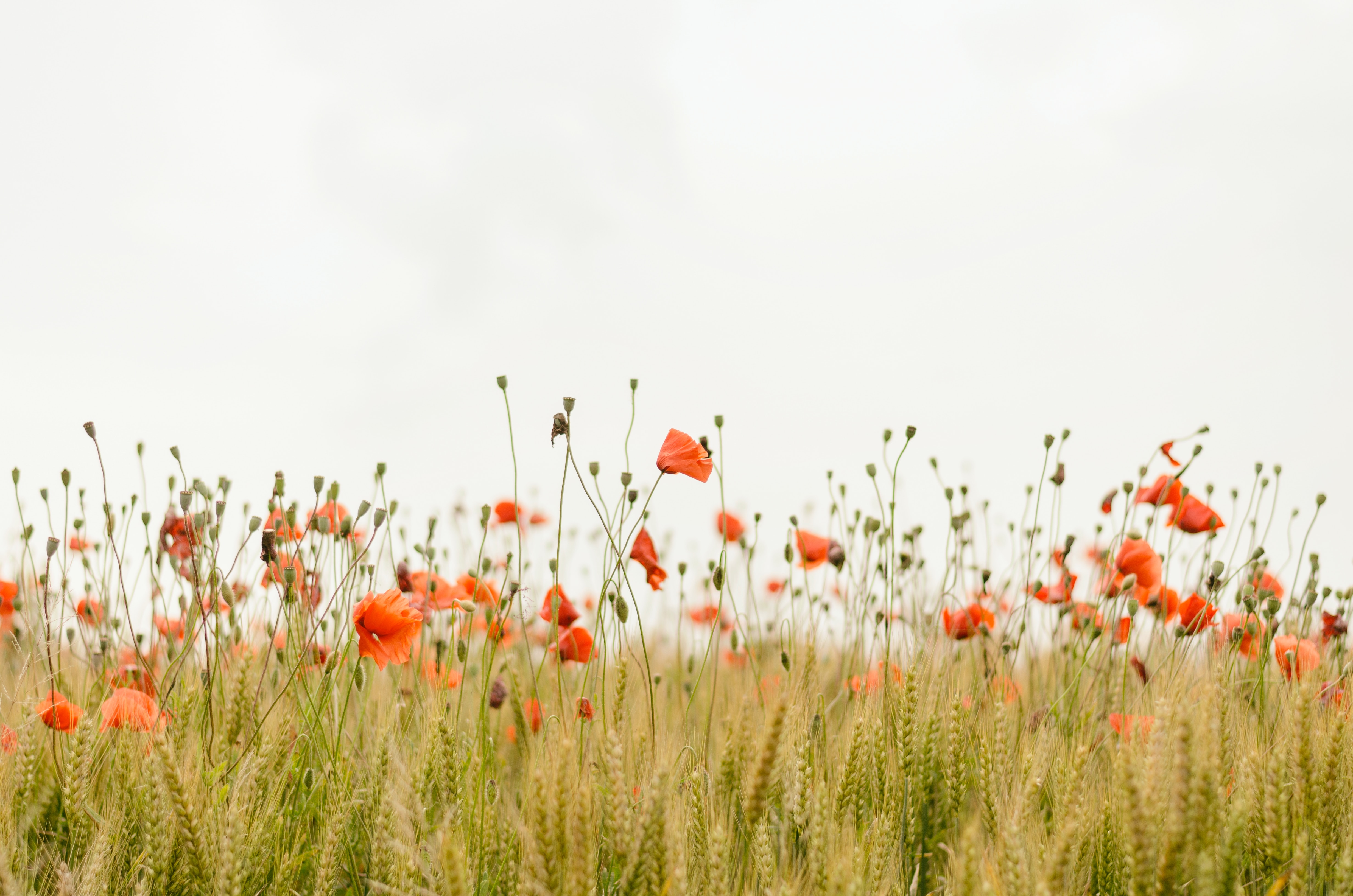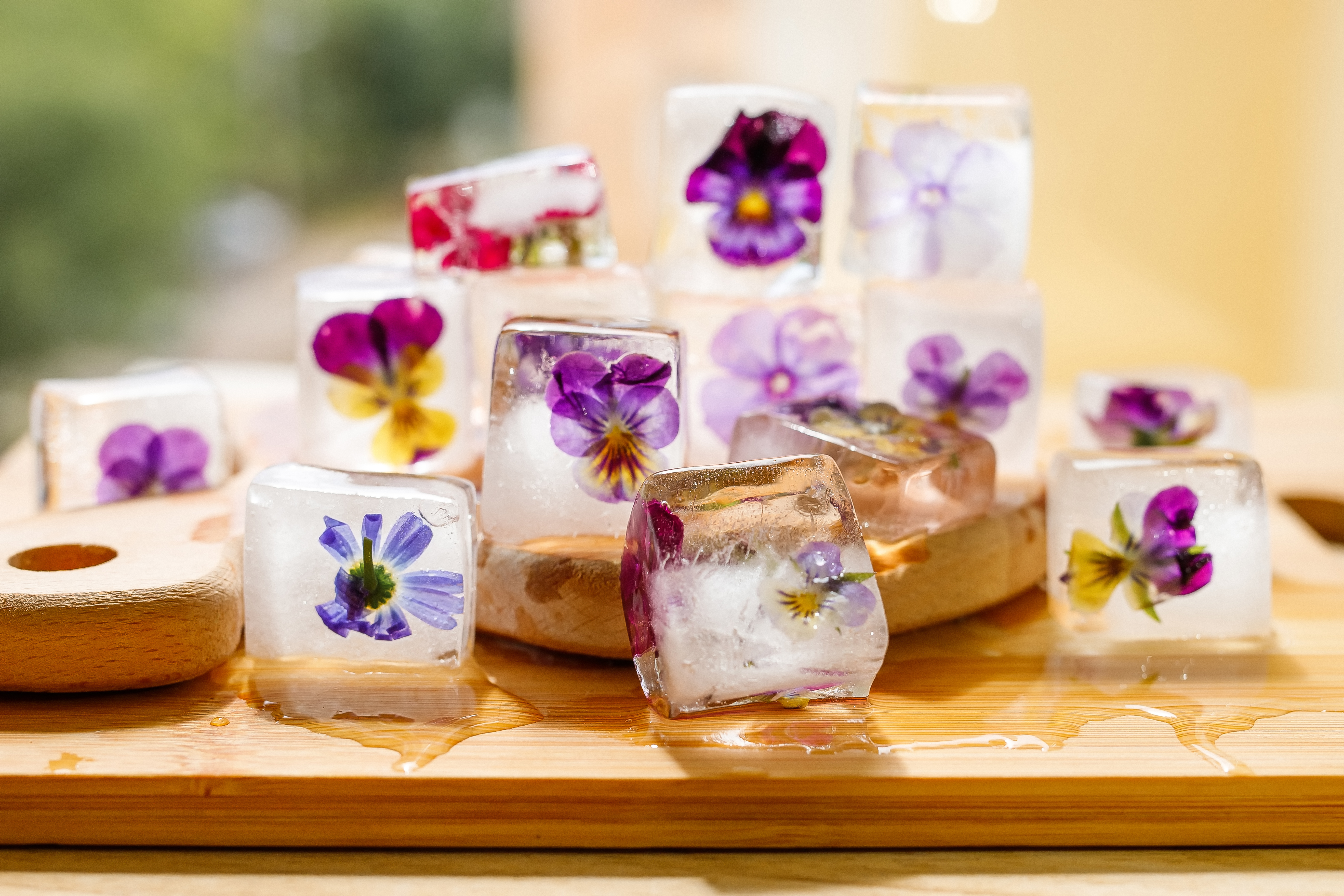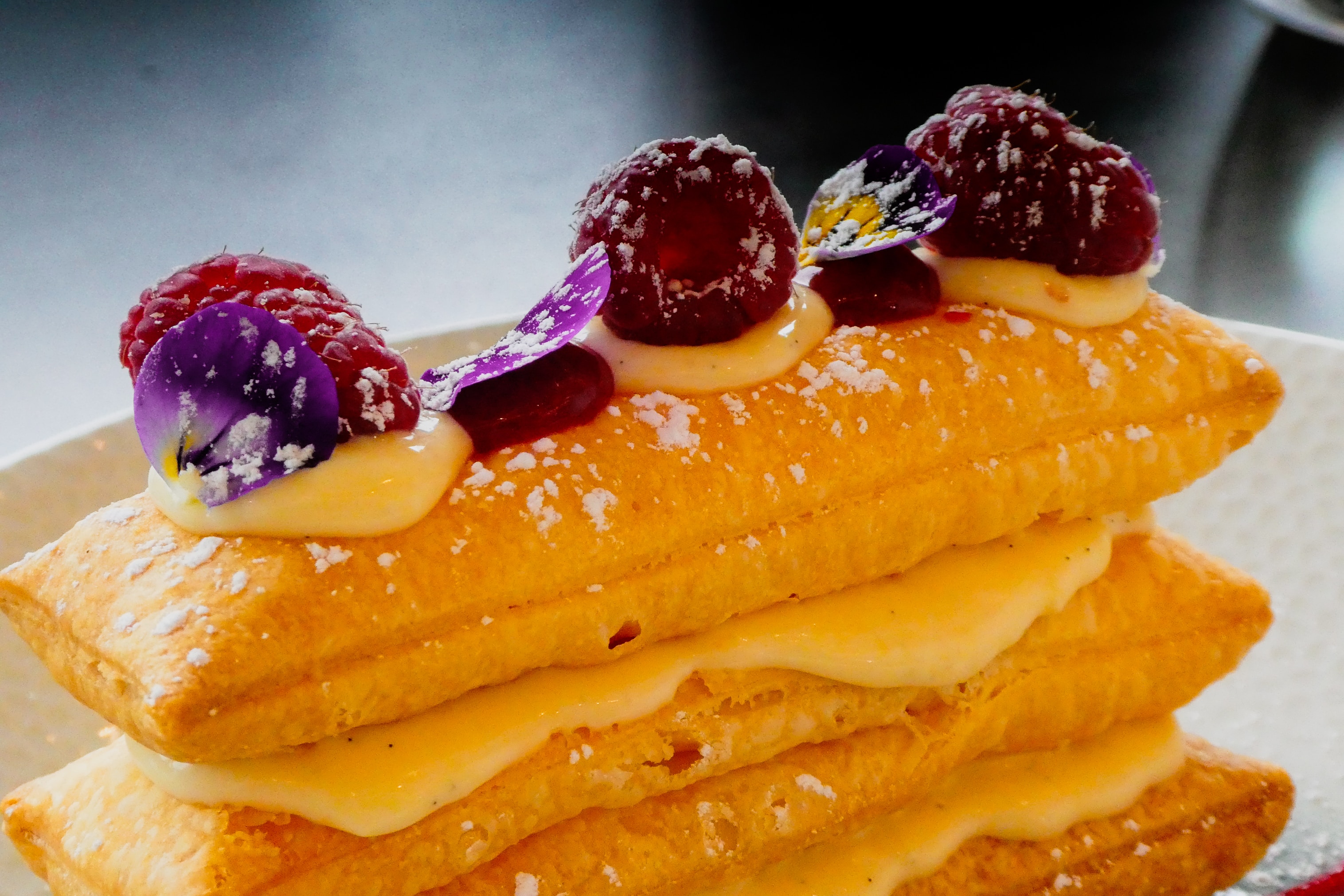Which flowers are edible? How to use and prepare edible flowers, by Val Stones

It's not just our gardening expert, Mark Lane, who loves flowers - our treasured baking expert Val Stones takes pride in her garden too! From childhood memories of foraging for edible flowers with family to more than 50 years of using them in her bakes, Val shares which flowers to hunt for and how to use edible flowers in sweet or savoury dishes.
Foraging with family and friends
My Dad was the first person to teach me about foraging. Most Sundays, he would take my sister and me for a country walk; there were several favourites, all of them containing woodland and hedgerows. He pointed out edible plants, flowers and berries, and we would talk about how ancient humans would have done exactly the same.
I have learned about wild and cultivated plants and flowers wherever I’ve travelled and used them in my cooking. I did a charity walk along the Great Wall of China, and as I was the slowest walker, the team doctor (and herbalist!) accompanied me. As we walked, he would point out flowers that were safe to eat, and one day I came down off the wall munching on some flowers - my friends were horrified! When they heard of my botanical lessons on the wall, the following days, they would eat flowers too.

Rose petals, violets and more in sweet bakes and cakes
Most commonly used in sweet dishes, many edible flowers can be found in the garden. Violas, primroses, rose petals (rose petal jam is delicious!), and nasturtiums are ideal for decorating cakes and desserts and can be eaten raw - generally, the petals and whole flowers are edible, but not the stems. Served on top of a cake with some fresh strawberries or in fruit salads, the floral flavours complement many sweet treats.
They can be used freshly picked, but young flowers will wilt within an hour or so. I grow these flowers, pick them daily when they are in season, and crystallise them to preserve them by dipping them in egg white and then coating them in caster sugar. Candied flowers are delicious with sweet treats!

Fresh flowers can also be preserved in ice cubes. Place your flower heads into an ice cube tray with a bit of water in each section and let them freeze. Once frozen, these can either be left to defrost and used immediately for cakes and other baked goods or cooked into savoury plates. They even make for beautiful ice cubes to be served in a summery tipple.
Violets can also be preserved after picking by placing them in a food processor, blitzing them with caster sugar, and then allowing them to dry before storing them in a jar in a cool, dark place. This edible flower makes the most delicious fragrant sugar to make and decorate cakes and biscuits.
A very dear, retired gardener friend taught me that fuchsia flowers, berries and leaves are edible too, and the berries take on a citrus taste. The sweetest part of the whole flower is the inner petals, and they don’t have stones, so they are easy to eat and are rich in vitamin C.

Edible flowers for savoury dishes
Many edible flowers can be used in a savoury dish. I most often use flowers from fennel, wild garlic, borage, dill, chives, garden peas, mint and rosemary. The marrow family, including courgette flowers and pumpkin flowers, are all edible and can be used in savoury recipes where they can be served lightly deep-fried in tempura batter. I buy dried peas and plant them in compost so that when they grow, I can crop the bean shoots and flowers for salads and garnishes.
Snapdragon, Marigold, Cornflower, Dahlia, red and white Clover, everlasting flower, Lavender and sunflower petals are also common edible flowers good for decorating. These flowers can be tossed into a salad or used to decorate dishes. Petals can also give a delicate flavour to stir fries or rice dishes.
Some flowers - calendula, rose, and alyssum - can also be dried and then crushed into powder to add to sweet and savoury recipes. Calendula, the common Marigold, is a phenomenal flower; the leaves and petals can be added to green salads and decorate dishes. The leaves are slightly bitter, and the petals are a peppery flavour.
Edible flowers from the garlic family
I grow a variety of garlic in my garden, and I have a few favourite recipes using the edible varieties of garlic. For example, woodland wild garlic, with a delicate fragrance from its broad green leaves and bursts of snowy white flowers, is delicious in quiches, casseroles, a bright green flavoursome pesto or your own garlic butter.

Allium triquetrum, commonly known as the “three-cornered leek” or Snowbell, originates from southern Europe but has spread into the UK. Each Spring, I pull up the stems and bulbs to use them in dishes as the flavour is a cross between garlic, onion and chives. I like to add it to stews, casseroles, quiches and soups. It makes excellent pesto, and the flowers can be added to salads and as a garnish to a savoury dish.
There is yet another member of the garlic family that I find on my foraging walks in April and May: Jack in The Hedge, garlic mustard, or Alliaara Petiolata. It’s a biennial, which means it grows alternate years, but because it seeds well each year, it can always be found. It adds an onion mustard flavour to salads and can be added to tomato dishes, casseroles and quiches.
If you're feeling inspired to grow your own edible flowers and more home produce to use in makes and bakes, our plant to plate calendar has a year of family-friendly recipes featuring fresh herbs and ingredients you can grow in your garden.
Stay up to date
Latest Blogs

Whole Home Comfort with Stannah and HSL

Dame Zandra Rhodes x Stannah: When accessibility meets style
Could more people benefit from home adaptation support for hidden disabilities?
50 years of Stannah Stairlifts – A milestone grounded in purpose

BBC’s Dr Punam Krishan reveals a little-known Parkinson’s symptom to watch for...

Are you at risk of falling? Dr. Punam Krishan’s simple 12-second test could tell you...

Snore Wars: Could sleeping separately be the secret to a better night’s rest?

Proud to carry the Made in Britain mark!
Stairlifts made for you
All our stairlifts whether straight or curved are customised to suit you and your home so call now to arrange a visit to get your FREE personalised quote!